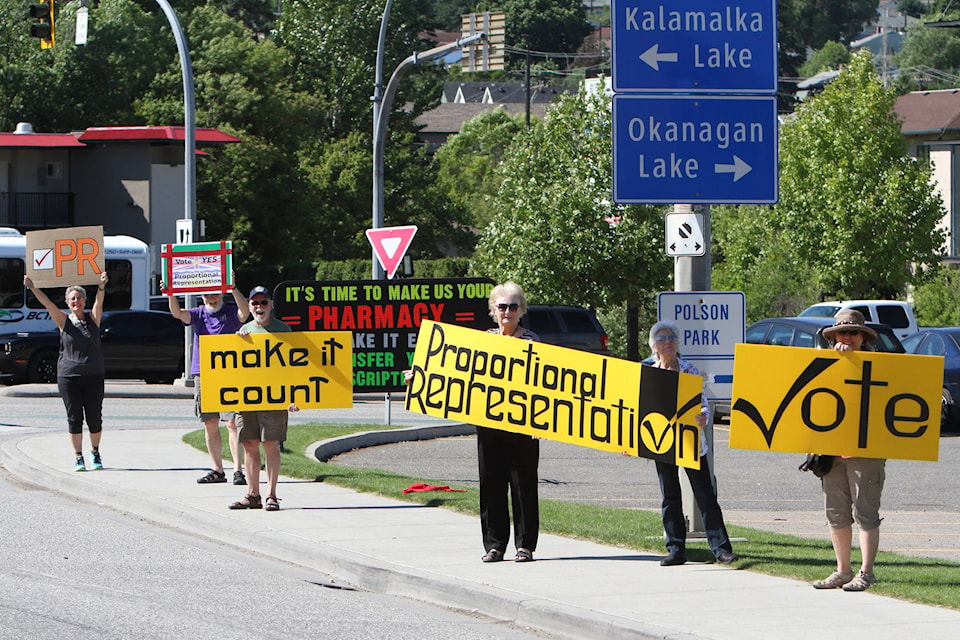Later this month, British Columbians will be asked to vote on a proposed change to the way we elect our provincial MLAs.
The B.C. government wants to know if voters want to move away from the current system and if so, is proposing one of three forms of proportional representation. The current “first-past-the-post” system, awards the candidate in each riding who receives the most votes that riding’s seat in the B.C. Legislature.
The referendum will ask voters two questions—if they want to keep the current first-past-the-post system or change to a proportional representation system. If they do want a change, voters will then be asked to rank three proposed forms of proportional representation: dual member proportional, mixed member proportional and rural-urban proportional.
RELATED: B.C.’s proportional representation referendum: The case for switching to PR
Dual-member proportional would produce two representatives in each riding. The first seat would be awarded to the candidate who receives the most votes—similar to first-past-the-post. The second seat would be awarded to one of the remaining candidates so proportionality is achieved across the entire province using a calculation to award parties their seats in ridings where they had their strongest performances.
Mixed-member proportional would see voters get two votes—one to decide the MLA for the single-seat riding, and one for a political party. Seats in the B.C. Legislature would then be filled first by the elected candidates from the ridings and then by the party candidates based on the percentage of votes each party received in the overall provincial election.
Rural–urban proportional is a hybrid system that would use mixed-member proportional representation in rural areas and a single transferable vote in urban and semi-urban areas.
The referendum will be the third time B.C. has held a provincewide vote on changing the provincial voting system.
RELATED: B.C.’s proportional representation referendum: The case against switching to PR
In 2005, a proposal to move to what was known as the B.C. Single Transferable Vote failed to win the 60 per cent support required at the time to pass. It received 57.7 per cent support, including majorities in 77 of the 79 ridings that existed in B.C. at the time. In 2009 , a second referendum was held, also on the BC-STV, with only 39.9 per cent supporting a change.
For the upcoming referendum, Elections BC mailed out referendum information cards to every household in the province in September, and a voter’s guide will be mailed out next week. Voters will receive referendum voting packages in the mail between Oct. 22 and Nov. 2 and the deadline to return them, also be mail, is 4:30 p.m. on Nov. 30.
Voters must be Canadian citizens, 18 years of age or older and residents of B.C. for at least six months prior to Nov. 30.
If a change is supported by a simple majority (50 per cent plus one), a second referendum would be held after two elections using the new system to confirm its use going forward.
Today the Capital News is presenting the arguments for and against proportional representation by local proponent Wayne Broughton, a professor at UBC Okanagan and opponent Kelowna lawyer Justin Dalton.
To report a typo, email:
newstips@kelownacapnews.com.
@KelownaCapNews
newstips@kelownacapnews.com
Like us on Facebook and follow us on Twitter.
